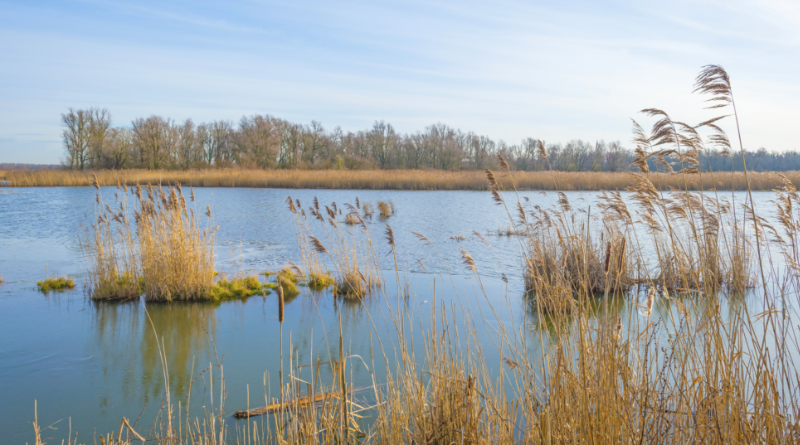PM Modi calls for 100-day campaign to clean up water bodies, harvest rainwater

Underlining the importance of collective responsibility towards water conservation, Prime Minister Narendra Modi has called for a 100-day campaign to clean up all water bodies and prepare them for rainwater harvesting before the monsoon season starts this year even as a new research study by IIT-Kharagpur has found that close to 20 per cent of India’s total land area has toxic levels of arsenic in its groundwater and as many as 250 million people across the country are exposed to the poisonous element.
In his monthly ‘Mann Ki Baat’ broadcast, Modi said water has been crucial for the development of humankind for centuries. “We have to understand our collective responsibility towards water conservation,” he said, adding that the Union Jal Shakti Ministry will soon initiate a ‘Catch the rain’ campaign with its main theme being ‘catch the rain, where it falls, when it falls’.
Noting that in most parts of India, rainfall begins in May-June, the Prime Minister asked if a 100-day campaign for the sake of cleaning up water sources around us and conserving rainwater could be started right away? “With this very thought in mind, in a few days from now, Jal Shakti Abhiyan ‘catch the rain’ is being initiated by the Jal Shakti Ministry,” he said.
Modi said when people feel proud of indigenous products, then Aatmanirbhar Bharat does not just remain an economic programme but becomes a national spirit.
“This is the best time to think about water conservation in the summer months ahead,” Modi said.
Meanwhile, the IIT-Kharagpur study, which used artificial intelligence (AI)-based prediction modelling, noted that there was much greater extent of high arsenic contamination and total population exposed than already known from arsenic sampling exercises and reports by various governmental and non-governmental organisations.
The research study, which was published recently in the journal Science of the Total Environment, indicates the need for much more rigorous sampling of arsenic levels across India than what exists.
According to the study, the high arsenic contaminated areas were mostly located along the Indus-Ganga-Brahmaputra river basin and in pockets in Peninsular India. The states showing highest extent of elevated groundwater arsenic contamination include Punjab (92 per cent), Bihar (70 per cent), West Bengal (69 per cent), Assam (48 per cent), Haryana (43 per cent), Uttar Pradesh (28 per cent) and Gujarat (24 per cent).
Also, there were sporadic occurrences in Madhya Pradesh (9 per cent), Karnataka (8 per cent), Odisha (4 per cent), Maharashtra (1 per cent), and south-eastern part of Jammu & Kashmir (1 per cent). All other states were found to have negligible or mostly no arsenic hazard, the study said.
“A total of more than 250 million people are estimated to be exposed to high arsenic in India. Our study indicates a strong influence of irrigational abstraction (of groundwater) and regional geology on arsenic distribution patterns within India”, IIT-Kharagpur Associate Professor Abhijit Mukherjee, who is also the lead author of the research study, was quoted as saying in a PTI news report.
In the study, the team of scientists used advanced AI to model the occurrence of arsenic above its national permissible limit of 10 microgrammes per litre (µg/L) in the groundwater across India based on the various geologic, hydrogeologic and anthropogenic factors that have been known to control the groundwater arsenic distribution in the aquifers.
Mukherjee said the study is the first integrated report on the field-sampled arsenic distribution patterns along with an arsenic prediction model using advanced AI across India.
The researchers said India has been identified to be one of the worst affected countries by arsenic in groundwater. At present, over 80 per cent of the drinking water in India is sourced to groundwater and previous studies estimated about 90 million groundwater-dependent population in India is at risk of arsenic poisoning through direct and indirect consumption of arsenic-contaminated shallow tubewell waters, the team said..
Several studies in the past have attempted to understand the patterns of occurrence of such arsenic-contaminated groundwater across India. The IIT-Kharagpur team said most of these studies are local-scaled and field-based and were mostly limited to the Ganga river basin and the findings will not be applicable for the rest of India.
“Our AI model predicts pervasive arsenic contamination in major parts of the Himalayan mega-river Indus-Ganges-Brahmaputra basins, however it also occurs in several more-localised pockets, mostly related to ancient tectonic zones, igneous provinces, aquifers in modern delta and known sulphide mineralised mining regions,” said Mukherjee.



